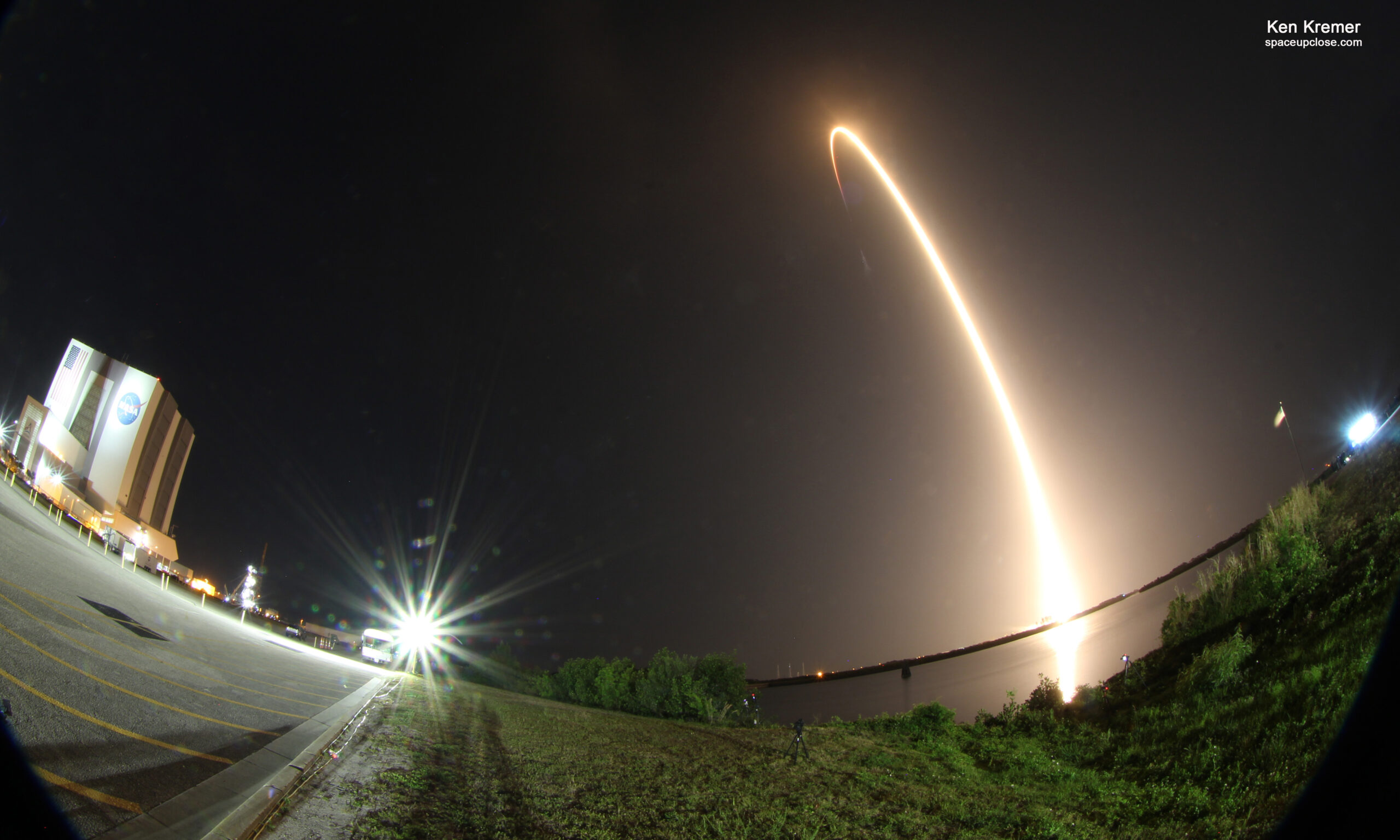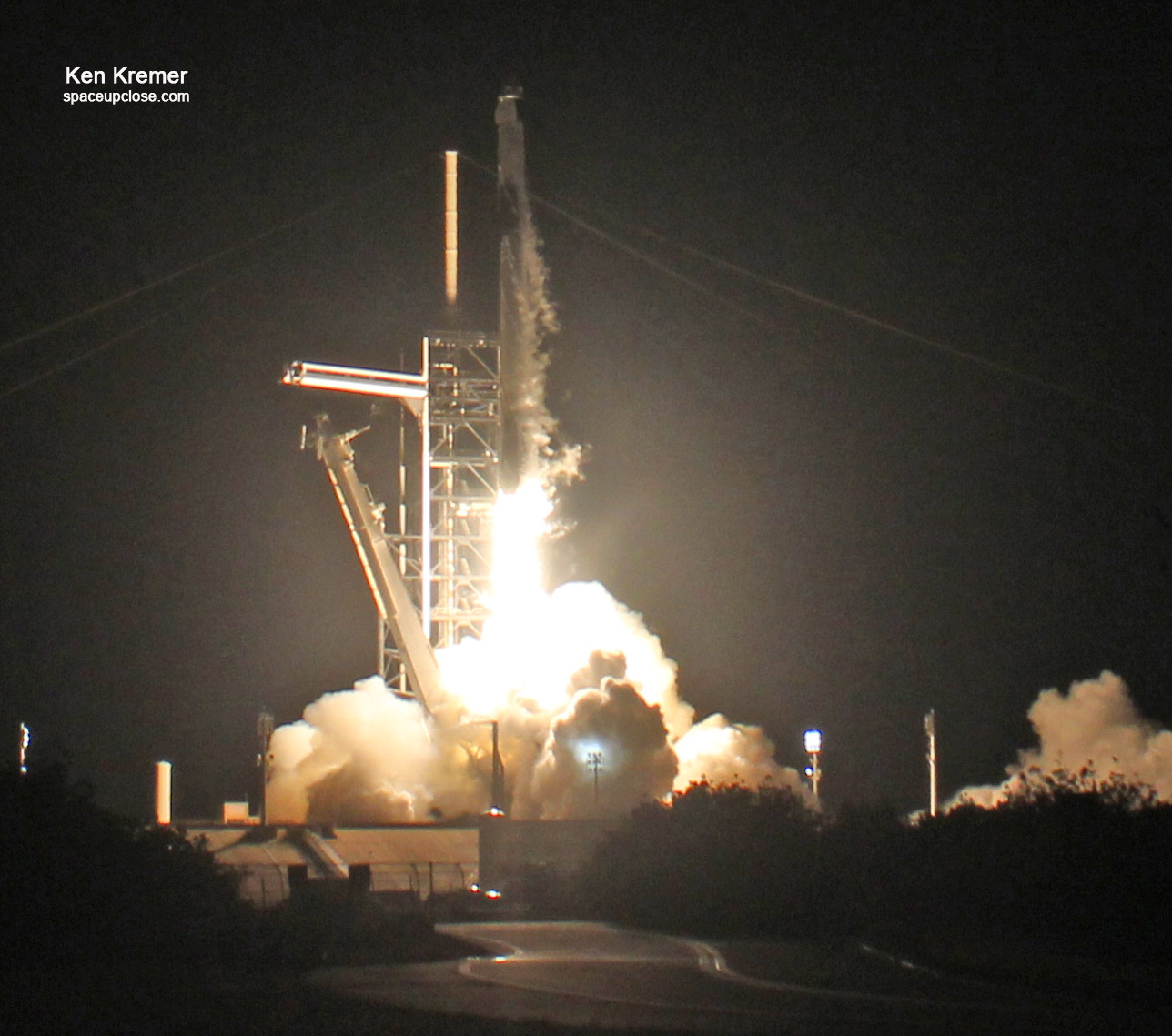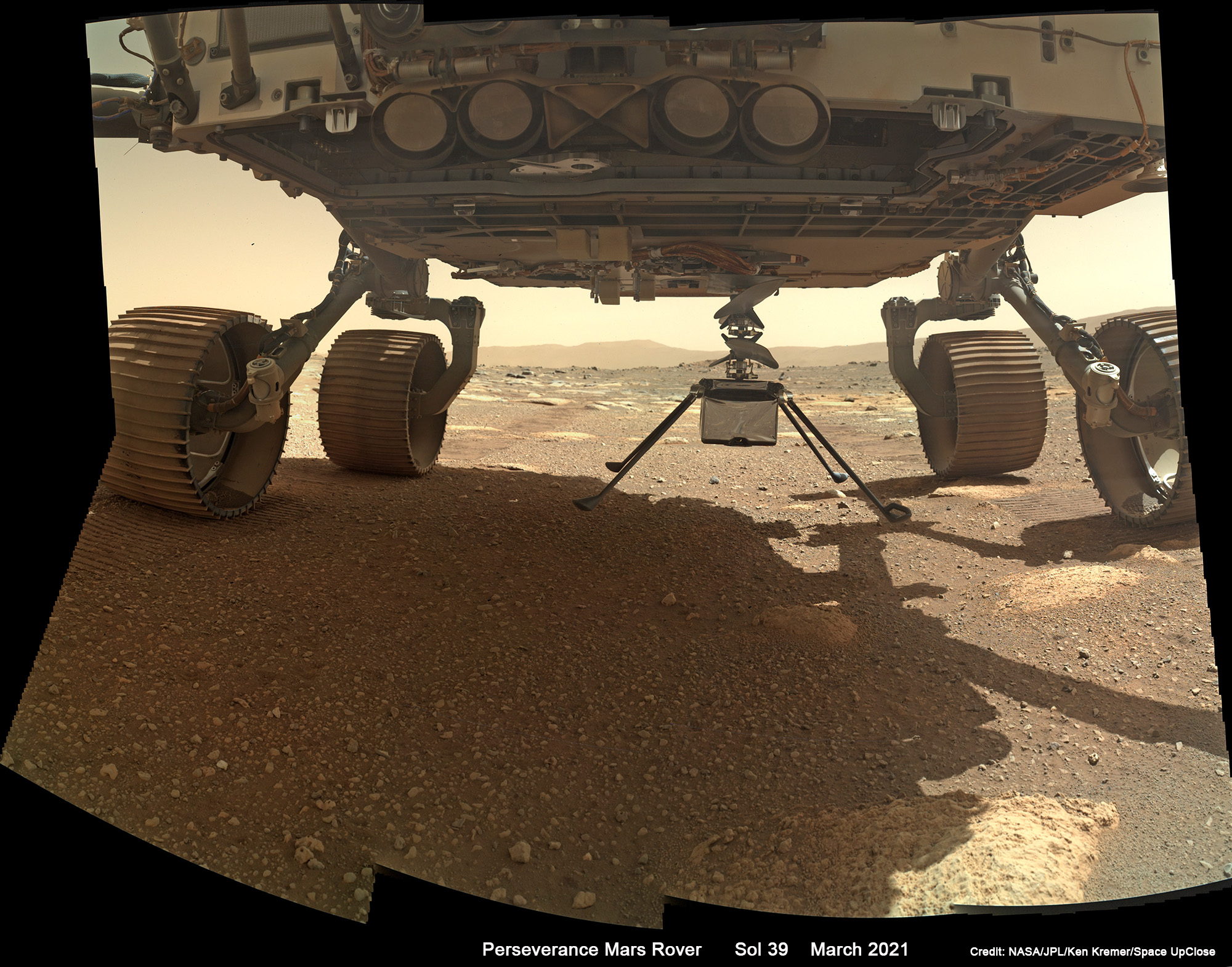
For SpaceUpClose.com & RocketSTEM
CAPE CANAVERAL, FL – NASA has slightly delayed the 1st flight test flight of the experimental Ingenuity Mars Helicopter by three days and retargeted it to NET April 11, the agency announced, after completing the methodical step by step unfolding, swing down and deployment of all four graphite composite landing legs this past week leaving the $80 million rotorcraft still hanging down from the stowed attach point on the belly of the Perseverance rover and positioned just above the Martian surface before it is dropped down.
The delay is nothing to worry about.
The science and engineering team just needs a few more days to complete testing and checkouts of the delightfully diminutive 4 pound (1.8 kg) Ingenuity copter, nicknamed ‘Ginny’ – dangling from Perseverance belly about 5 inches (13 cm) above the surface of the Red Planet at the ‘airfield‘ at the Jezero Crater landing site.
The goal is to conduct a history making ‘Wright Brothers’ first flight moment with the agencies experimental craft on Mars on no earlier than April 11 -aiming to make the first attempt at powered, controlled flight of an aircraft on another planet.
And Ginny has to do all that in the ultra-thin Martian atmosphere less than 1% as dense as Earth’s.
The images confirming the successful unfurlment and deployment down of all four landing legs by the NASA JPL team were taken by the powerful Sherloc Watson high resolution camera on the end of the rover’s 7-foot-long (2.1-meter-long) robotic arm on Sol 39 (March 30) and transmitted back overnight – which I stitched into a new Sol 39 mosaic from eight color raw images and shown as lead image above.
If all goes well with the history making first powered flight on another planet on April 11 the initial data and imagery should be transmitted and received back on Earth a day later on April 12.
“This should be quite a sight. Don’t worry, I’ll have my cameras ready,” Perseverance tweeted.
“Come fly with us. #MarsHelicopter is preparing to do something that’s never been done: controlled, powered flight on another planet. Takeoff is now slated for no earlier than April 11, with data arriving on Earth on April 12,” the NASA JPL team announced via tweet.
This should be quite a sight. Don’t worry, I’ll have my cameras ready. 📷 #MarsHelicopter https://t.co/TDr7KZqbX0
— NASA's Perseverance Mars Rover (@NASAPersevere) April 1, 2021
Meanwhile Perseverance has been busy gathering high resolution imagery of her breathtaking surroundings nearby and off into the distance to the stunning walls of Jezero Crater some 2 miles (3 km) away.
Check out the spectacular Jezero Crater scenery in my new mosaics of images taken by the robots mast mounted Mastcam-Z camera on Sols 36 and 38 – see below.
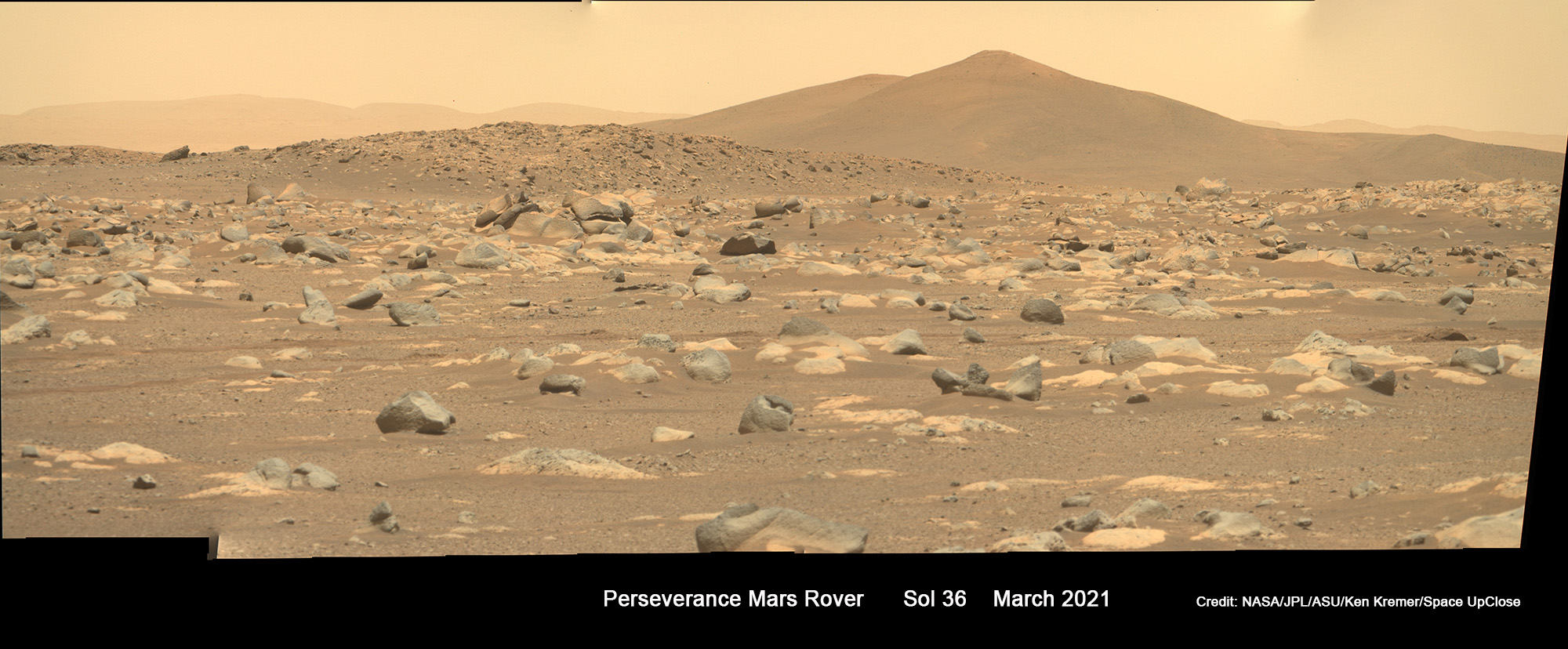
The team must ensure that Ingenuity is operating perfectly and all charged up with its solar panels before the cord is cut and the copter must survive utterly harsh and frigid Martian nights down to Antarctica-like temperatures of -130ºF (-90ºC).
“When will the #MarsHelicopter drop? Soon! First we need to charge it to 100%. Once it’s no longer connected to @NASAPersevere, the craft must survive surface temperatures down to -130ºF (-90ºC) on its own. Check out the chief engineer’s blog for more,” the NASA JPL team announced via tweet.
When will the #MarsHelicopter drop? Soon! First we need to charge it to 100%. Once it's no longer connected to @NASAPersevere, the craft must survive surface temperatures down to -130ºF (-90ºC) on its own.
Check out the chief engineer’s blog for more: https://t.co/UDgQPkMSRl
— NASA JPL (@NASAJPL) April 2, 2021
The Ingenuity Mars Helicopter is a technology demonstration experiment aboard Perseverance.
Ginny is not part pf the science mission focused on astrobiology and the search for signs of past life on the Red Planet.
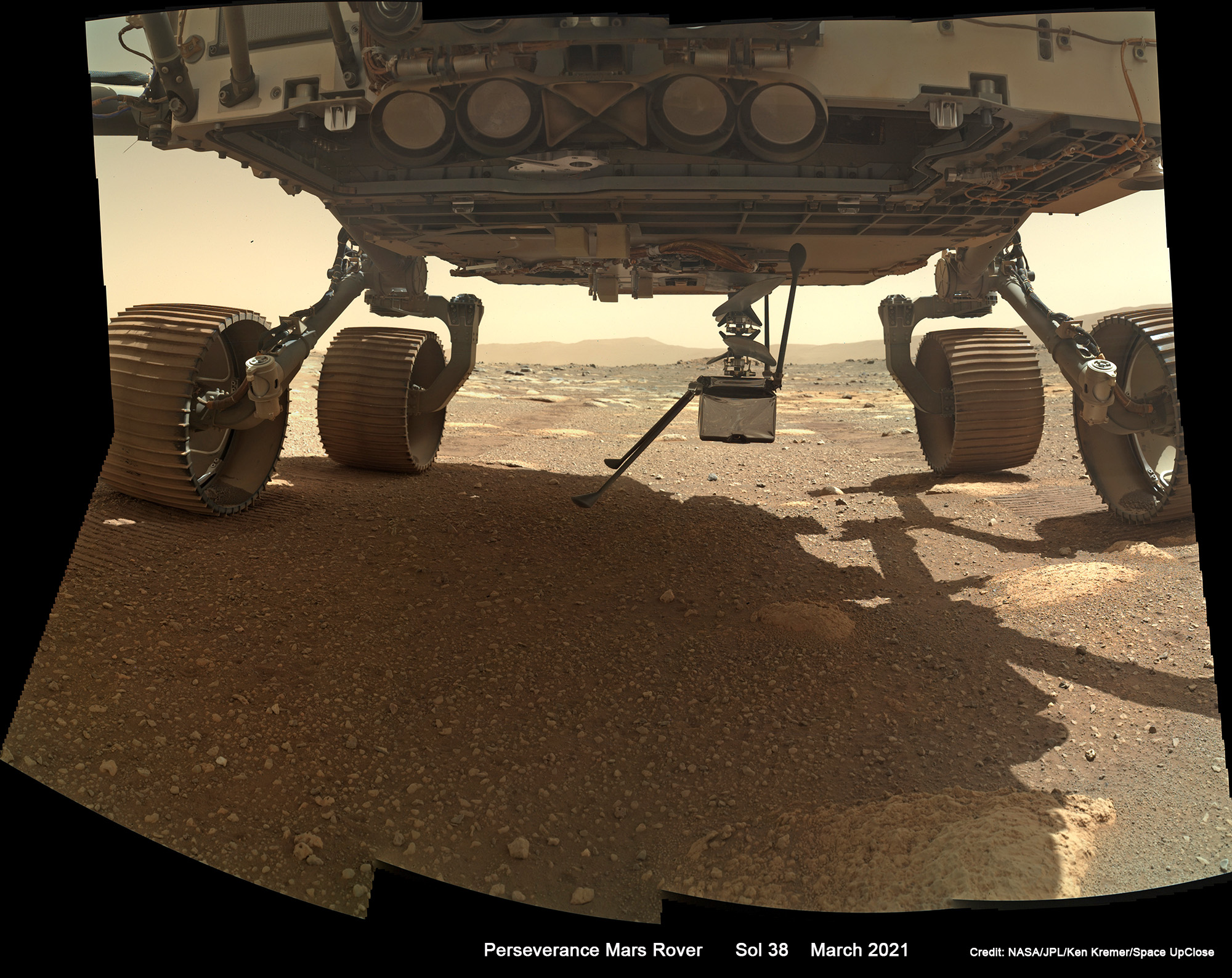
“It’s Cold on Mars,” wrote Bob Balaram, Chief Engineer for the Mars Helicopter Project at NASA’s Jet Propulsion Laboratory, in a blog post today, April 2.
Here are the complete details from Bob Balaram:
“Within a few days, Ingenuity will be on the surface of Mars. Until now it has been connected to the Perseverance rover, which allowed Ingenuity to charge its battery as well as use a thermostat-controlled heater powered by the rover. This heater keeps the interior at about 45 degrees F through the bitter cold of the Martian night, where temperatures can drop to as low as -130F. That comfortably protects key components such as the battery and some of the sensitive electronics from harm at very cold temperatures.
Before Ingenuity drops the last few inches onto its airfield, Perseverance will charge up the little helicopter’s battery to a 100 percent state-of-charge. That’s a good thing, because Ingenuity has to run its own heater from its own battery after the drop. No more free power from the rover!
But there is another free source of energy on Mars: the Sun! The Sun’s energy is weaker at Mars-a little over half of what we would find here on Earth on a bright, sunny day. But it’s enough for Ingenuity’s high-tech solar panel to charge the battery. Of course, this means that the rover will drive away from Ingenuity after the drop so that we uncover the solar panel. This will occur as soon as possible after the drop.
Ingenuity can’t afford to keep the temperature of its interior at a “balmy” 45F -that takes too much precious energy from the battery. Instead, when it wakes up on the surface after being dropped, it sets its thermostat to about 5F or lower. Then it’s off to survive the first night on its own!
The Ingenuity team will be anxiously waiting to hear from the helicopter the next day. Did it make it through the night? Is the solar panel working as expected? The team will check the temperatures and the battery recharge performance over the next couple of days. If it all looks good, then it’s onto the next steps: unlocking the rotor blades, and testing out all the motors and sensors.”

The ‘daunting milestones’ to begin the Ingenuity deployment began last week on Sol 30 (March 21, 2021) after Perseverance was commanded to eject the guitar case-shaped graphite composite debris shield cover that protected Ingenuity during landing and was dropped flat onto the Martian surface directly underneath her and between the six wheels.
See my Sol 30 mosaic below illustrating the scene with the 1st look at NASA’s Mars Ingenuity helicopter unveiled and folded up and attached to the belly of the rover.
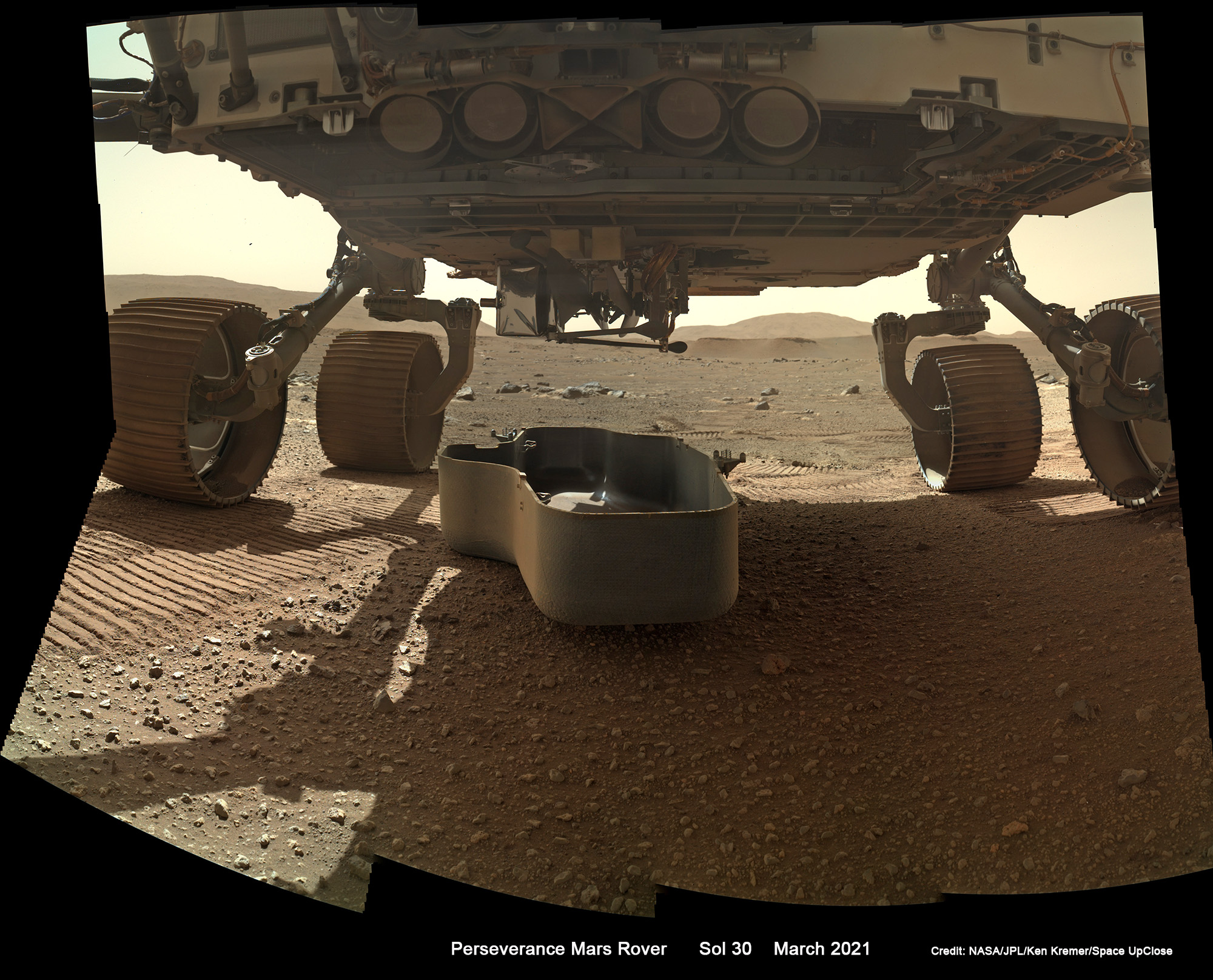
The rover then drove away to the ‘airfield’
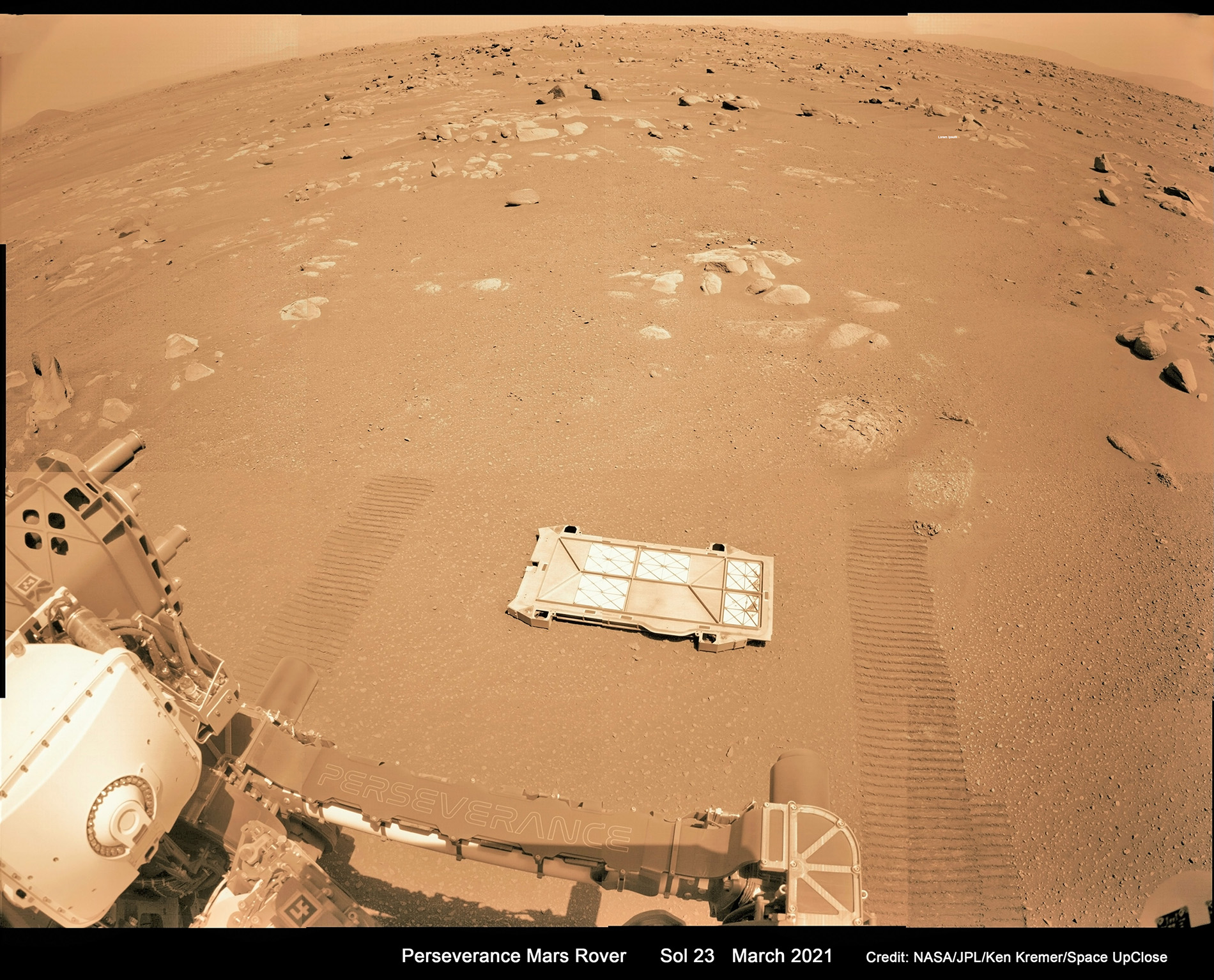
Next on Sol 37 released the locking mechanism at the belly attach point on the belly of NASA’s Perseverance – that began the irreversible start to the deployment with the spring-loaded unfurlment of the four landing legs.
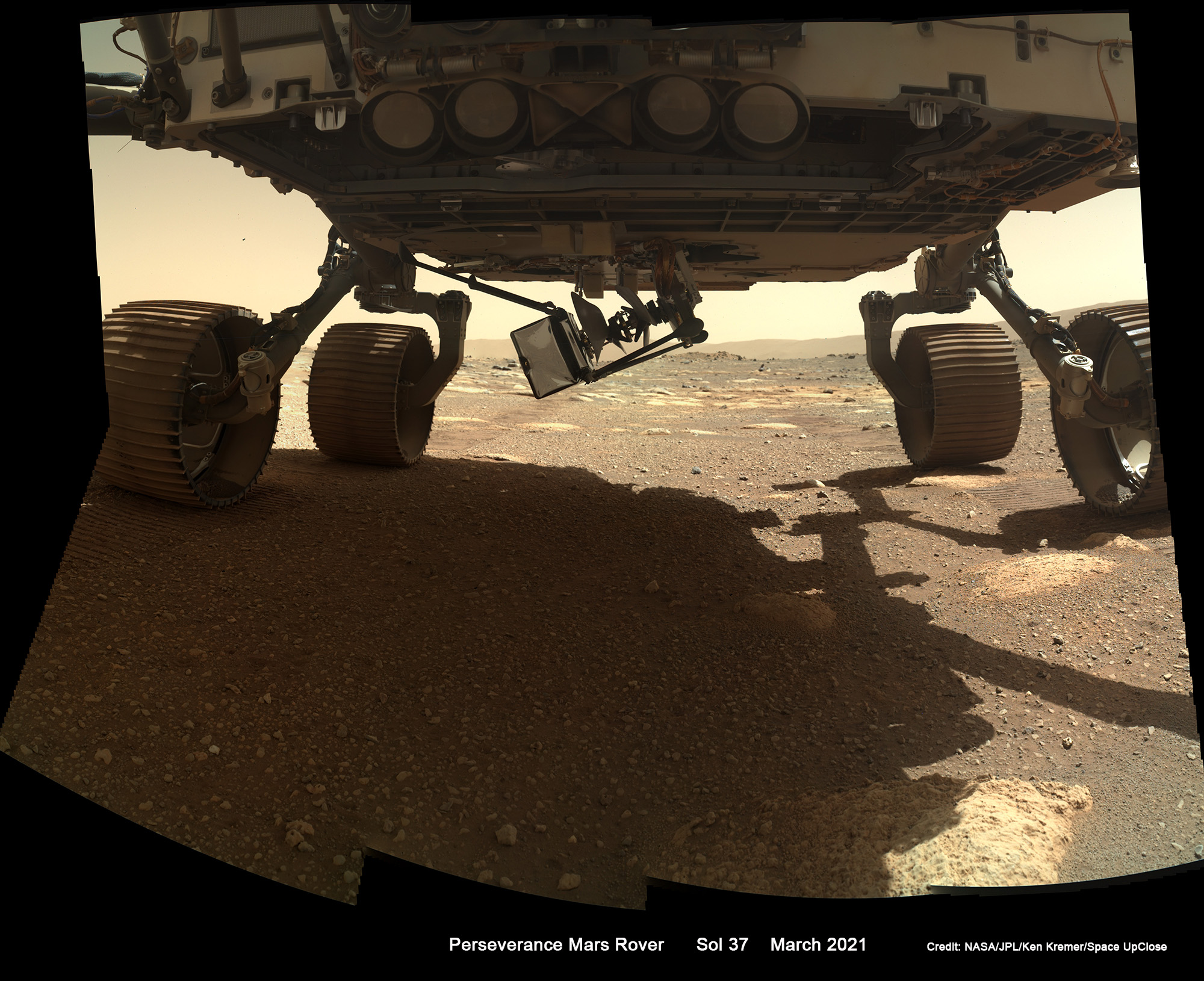
Once deployed, Ingenuity will have 30 Martian days, or sols, (31 Earth days) to conduct its test flight campaign of up to five test flights.
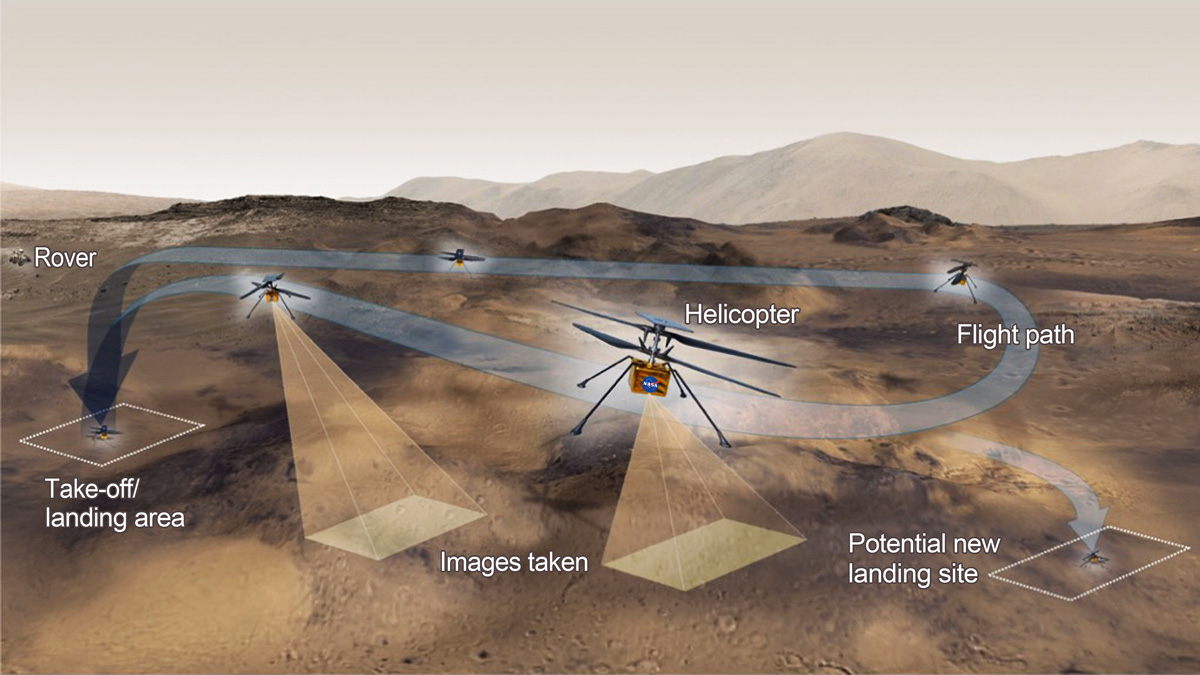
My commentary about the search for life on Mars and the deployment of the Ingenuity Helicopter was featured in a live interview on March 30 on News Nation Cable TV News Network on ‘The Donlon Report’ illustrated with my Mars mosaics.
https://twitter.com/TheDonlonReport/status/1377282034775769092
Ingenuity is the first Helicopter to ride to Mars and the first to be touched by Martian air.
The Sherloc Watson camera is located on the robotic arm hand, or turret seen in my Sol 17 mosaic below.
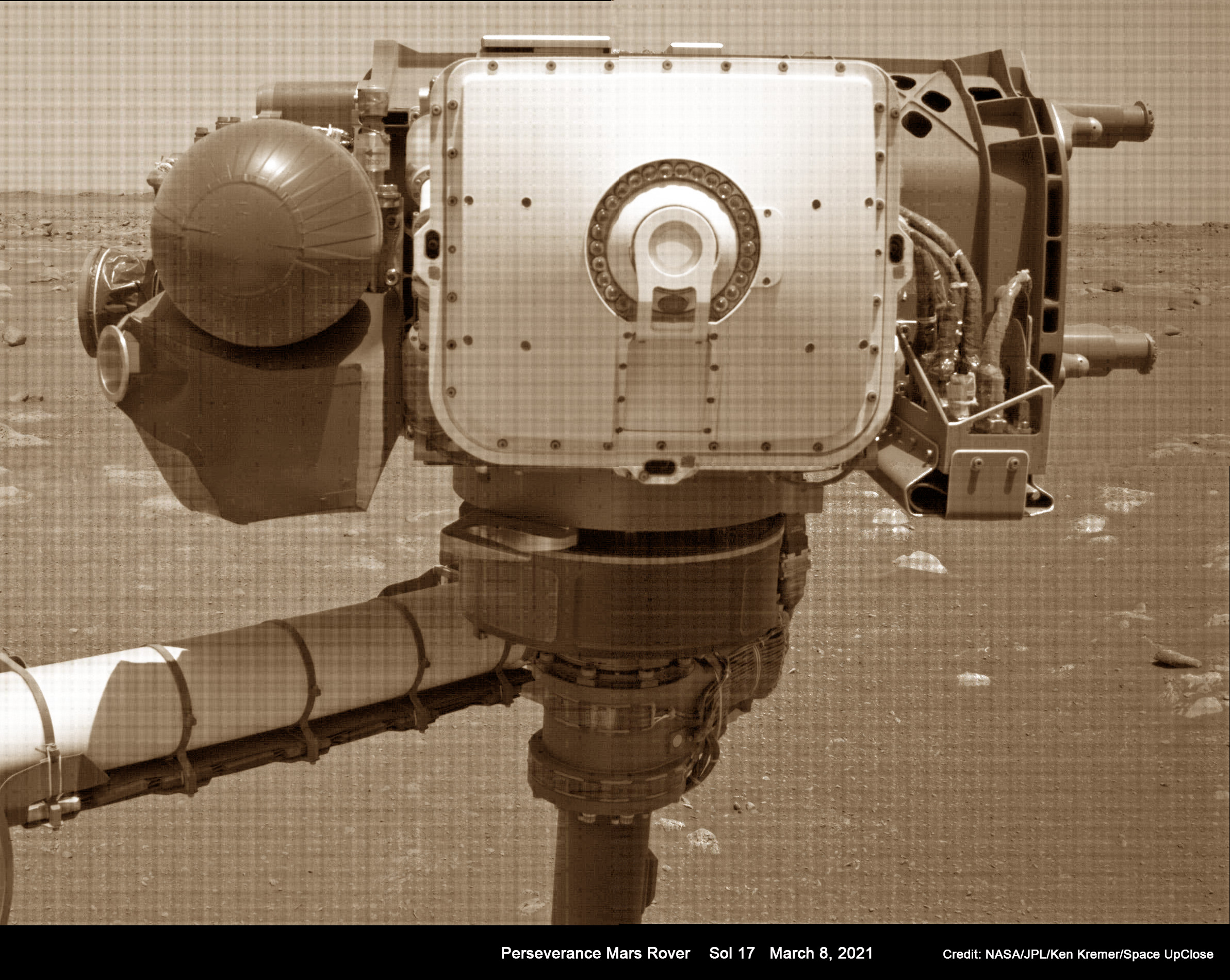
The solar powered Ingenuity helicopter is a technology demonstration experiment aimed at attempting the first flight on Mars.
It is stowed on the belly and receives its charge from the rover’s power supply.
The four legged Ingenuity has a mass of about 4.0 pounds (1.8 kilograms) and stands 1.6 feet or 19 inches (0.49 meters) high.
It is equipped with two counter rotating blades for lift spinning at about 2,400 rpm and two cameras.
After Ingenuity is deployed on Mars’ surface its batteries will be charged solely by the helicopter’s own solar panel. If Ingenuity survives the cold Martian nights during its preflight checkout, the team will proceed with testing.
My Sol 15 Perseverance rover shadow selfie mosaic was also featured at the Space.com space news website – here.
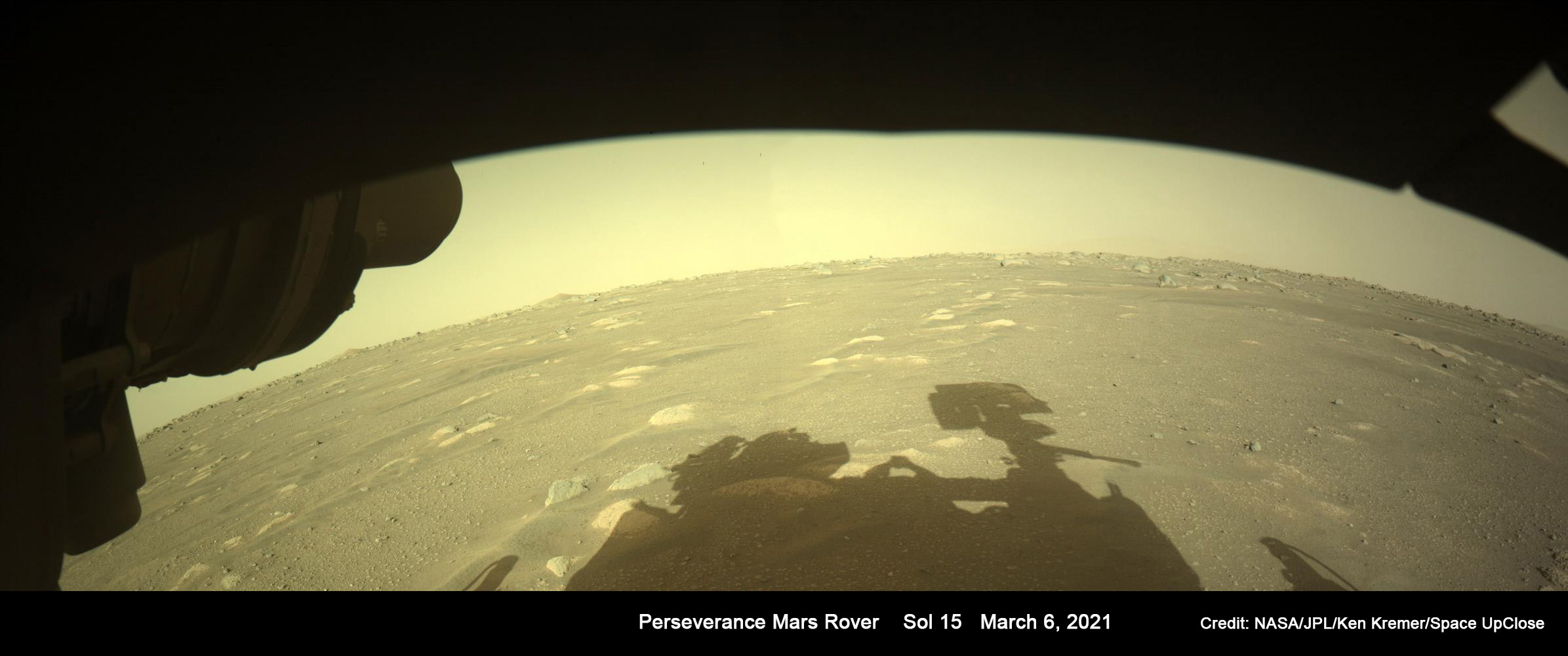
Watch our live and complete ‘Stay Curious’ with live Perseverance landing commentary Feb 18, 2021 as well as March 22 mission update and earlier programs on Mars Mania on Feb 12.
https://www.facebook.com/175507880819/videos/2694057200904814
https://www.facebook.com/175507880819/videos/752176242375043
https://www.facebook.com/175507880819/videos/3246699658764085
Watch Ken’s continuing reports about Mars 2020 Perseverance and Curiosity rovers, Artemis and NASA missions, SpaceX, Starlink, Commercial Crew and Starliner and Crew Dragon and onsite for live reporting of upcoming and recent SpaceX and ULA launches including Crew 1 & 2, Demo-2, ISS, X-37B, Solar Orbiter, NRO spysats and national security missions and more at the Kennedy Space Center and Cape Canaveral Space Force Station.
Stay tuned here for Ken’s continuing Earth and Planetary science and human spaceflight news: www.kenkremer.com –www.spaceupclose.com – twitter @ken_kremer – email: ken at kenkremer.com
Dr. Kremer is a research scientist and journalist based in the KSC area, active in outreach and interviewed regularly on TV and radio about space topics.
………….
Ken’s photos are for sale and he is available for lectures and outreach events
Ken has created hundreds of widely published Mars rover mosaics and lectures also about NASA’s Mars rovers
Please consider supporting Ken’s work by donating at Patreon:
https://www.patreon.com/kenkremer
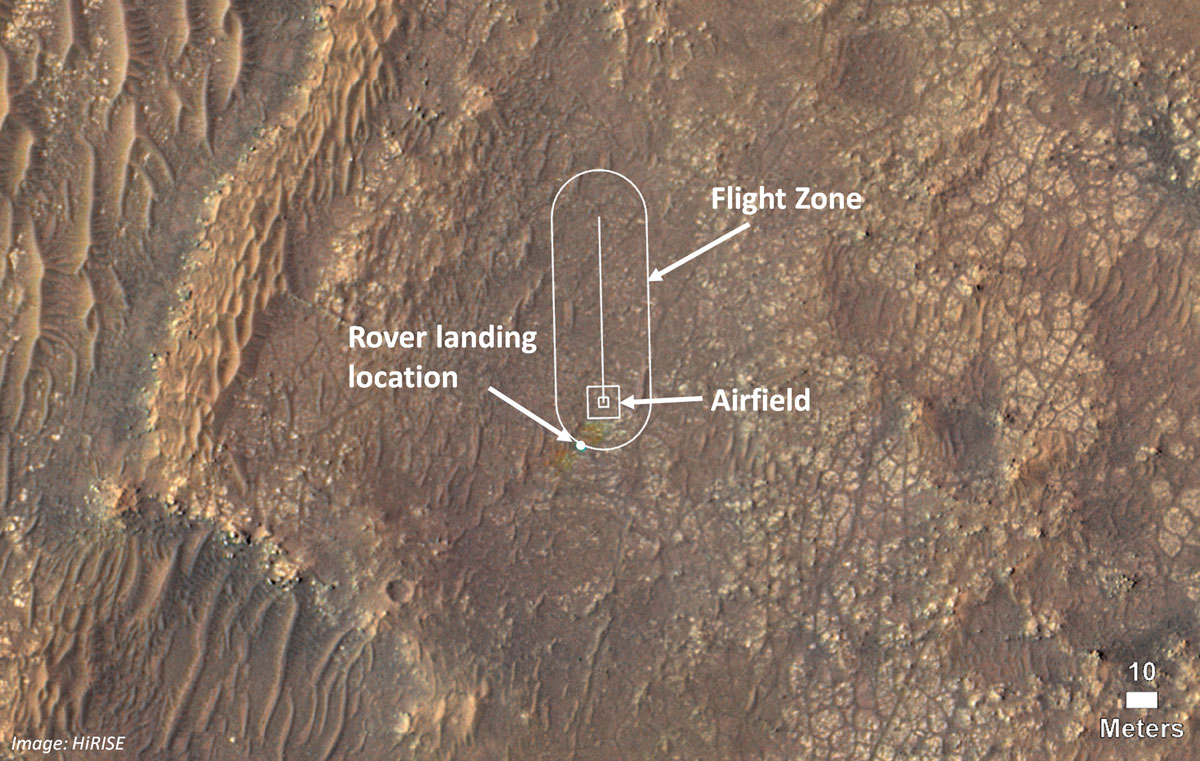
Some small rainbow-like color distortions (which do not actually appear on the terrain of Mars) are seen in this image near the landing location because of the way pre- and post-landing color images were merged. Credit: NASA/JPL
x


